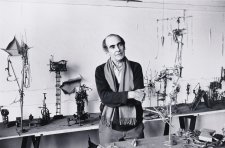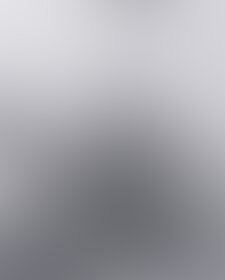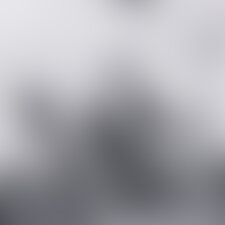Robert Klippel AO (1920-2001) was the most significant sculptor Australia has yet produced. He joined the Royal Australian Navy in 1939, and spent the war constructing model aircraft and ships designed to educate his fellow-servicemen in the recognition of enemy craft. After the war he studied sculpture in Sydney and London, and his 'assemblages' - sculptures that combined mechanical objects with organic materials - attracted enthusiasm in Europe. Among their admirers was the French surrealist André Breton, who organised an exhibition in Paris in 1949. Klippel moved to the USA in 1957, and spent a decade teaching there. He then returned to Sydney, where he lived and sculpted near Balmain until his death. He was collaborating on a retrospective show of his works at the Art Gallery of NSW when he died.
Yvonne Audette, painter, studied under John Passmore at the Julian Ashton School from 1948 to 1952. In 1955, she embarked on a decade of travel and study in the USA, London, France, Spain and Italy during which she mingled freely with the cutting edge abstractionists of the day. She returned to Sydney, where her first exhibition was with Robert Klippel at Kym Bonython's new gallery; she and Klippel remained close friends all his life. Within a couple of years she moved to Melbourne, where she still lives and works. In 1999 the Queensland Art Gallery mounted a major show of her art from the 1950s and 60s; her most recent commercial exhibition was in 2001 at the Metro 5 Gallery, Melbourne. Described as Australia's greatest living abstract painter, yet little known, Audette has recently gained a higher public profile with the publication of Yvonne Audette Paintings and Drawings 1949-2003 (2004).
Collection: National Portrait Gallery
Gift of the artist 2005
Donated through the Australian Government's Cultural Gifts Program
© Yvonne Audette/Copyright Agency, 2024
Yvonne Audette AM (1 portrait)



On one level The Companion talks about the most famous and frontline Australians, but on another it tells us about ourselves.



Australia's major abstract painter Yvonne Audette discusses her portrait of sculptor Robert Kippel.



Visit us, learn with us, support us or work with us! Here’s a range of information about planning your visit, our history and more!